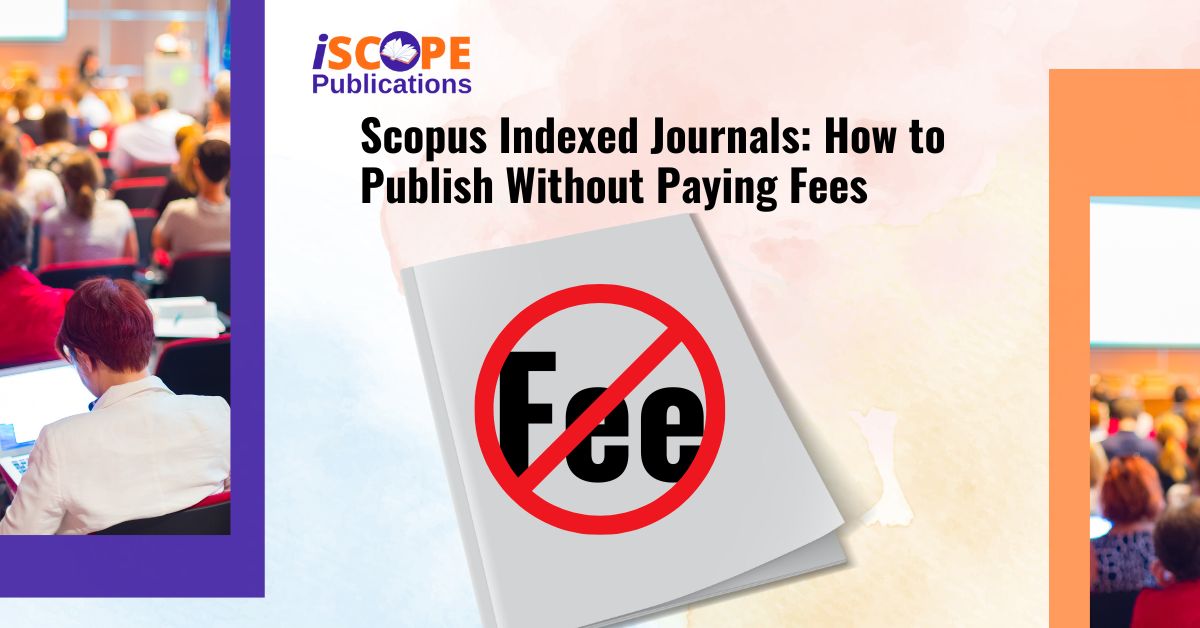In the world of academic publishing, the Scopus Impact Factor (SIF) is a critical metric that reflects the influence and quality of scholarly journals. It measures how often articles from a journal are cited in other research, serving as an indicator of the journal’s impact within the academic community. For journal editors and publishers, improving the Scopus Impact Factor can lead to greater visibility, increased submissions, and enhanced reputation. Effective strategies to enhance your journal’s Scopus Impact Factor and achieve greater academic prominence.

Understanding the Scopus Impact Factor
Before diving into improvement strategies, it’s important to understand what the Scopus Impact Factor entails:
- Definition: Scopus Impact Factor is calculated based on the number of citations received by articles published in a journal over a specific period, usually two or three years. It provides a measure of how frequently a journal’s articles are cited by other researchers.
- Significance: Higher Scopus Impact Factor indicates a greater influence and higher visibility of a journal’s content. It can attract more submissions, enhance the journal’s reputation, and increase its impact on the academic community.
Strategies to Improve Your Journal’s Scopus Impact Factor
- Publish High-Quality Research
- Focus on Rigorous Peer Review: Ensure that all submitted articles undergo a thorough and rigorous peer review process. High-quality research that meets academic standards is more likely to be cited by other researchers.
- Encourage High-Impact Topics: Prioritize publishing research on trending and high-impact topics within your field. Studies addressing significant problems or emerging trends are more likely to attract citations.
- Focus on Rigorous Peer Review: Ensure that all submitted articles undergo a thorough and rigorous peer review process. High-quality research that meets academic standards is more likely to be cited by other researchers.
- Enhance Journal Visibility and Accessibility
- Optimize Online Presence: Ensure your journal is easily accessible online through major academic databases and your own website. Improve search engine optimization (SEO) to make your journal’s articles more discoverable.
- Promote Articles Through Social Media: Leverage social media platforms and academic networks to promote newly published articles. Increased visibility can lead to higher citation rates.
- Optimize Online Presence: Ensure your journal is easily accessible online through major academic databases and your own website. Improve search engine optimization (SEO) to make your journal’s articles more discoverable.
- Increase the Frequency of Publications
- Expand Publishing Frequency: Consider increasing the number of issues published per year or the frequency of publication. More frequent issues can lead to a higher volume of citations as new research becomes available.
- Special Issues and Thematic Collections: Publish special issues or thematic collections on popular and emerging topics. These focused issues can attract more attention and citations.
- Expand Publishing Frequency: Consider increasing the number of issues published per year or the frequency of publication. More frequent issues can lead to a higher volume of citations as new research becomes available.
- Improve the Quality of Editorial Content
- Publish Review Articles: Include high-quality review articles that summarize and analyze recent advancements in the field. Review articles often attract a high number of citations as they provide valuable insights and comprehensive overviews.
- Feature Influential Authors: Invite well-known and respected researchers to contribute to your journal. Articles authored by influential researchers are more likely to be cited.
- Publish Review Articles: Include high-quality review articles that summarize and analyze recent advancements in the field. Review articles often attract a high number of citations as they provide valuable insights and comprehensive overviews.
- Engage with the Research Community
- Host Conferences and Workshops: Organize academic conferences, workshops, or webinars related to your journal’s focus. This can increase the visibility of your journal and its publications.
- Encourage Collaborative Research: Foster collaborations between researchers and institutions. Collaborative studies often lead to more comprehensive and cited research articles.
- Host Conferences and Workshops: Organize academic conferences, workshops, or webinars related to your journal’s focus. This can increase the visibility of your journal and its publications.
- Monitor and Analyze Citation Patterns
- Track Citations: Regularly monitor citation patterns and trends for articles published in your journal. Understanding which articles are being cited and why can help you focus on areas with high citation potential.
- Analyze Competitor Journals: Study the strategies employed by journals with high Scopus Impact Factors. Learn from their practices and apply relevant strategies to your own journal.
- Track Citations: Regularly monitor citation patterns and trends for articles published in your journal. Understanding which articles are being cited and why can help you focus on areas with high citation potential.
- Ensure Ethical Publishing Practices
- Adhere to Ethical Standards: Maintain high ethical standards in publishing, including transparency, integrity, and adherence to best practices in peer review. Ethical practices contribute to the credibility and trustworthiness of your journal.
- Address Misconduct: Actively address any issues related to research misconduct or publication ethics. Ensuring the integrity of published research helps maintain the journal’s reputation and citation impact.
- Adhere to Ethical Standards: Maintain high ethical standards in publishing, including transparency, integrity, and adherence to best practices in peer review. Ethical practices contribute to the credibility and trustworthiness of your journal.
FAQs
What is the Scopus Impact Factor?
Term “Scopus Impact Factor” is often used informally, but Scopus itself does not provide an official Impact Factor. Instead, Scopus offers other metrics like CiteScore, SCImago Journal Rank (SJR), and Source-Normalized Impact per Paper (SNIP) to evaluate journal impact.
How is CiteScore different from the Impact Factor?
CiteScore is similar to the Impact Factor but is calculated differently. CiteScore measures the average citations received per document published in a journal over a four-year period, whereas the Impact Factor typically uses a two-year period.
What is SCImago Journal Rank (SJR)?
SJR is a prestige metric that considers both the number of citations received by a journal and the importance or prestige of the journals where such citations come from. It helps to measure the scientific influence of scholarly journals.
What is Source-Normalized Impact per Paper (SNIP)?
SNIP measures contextual citation impact by accounting for differences in citation practices across disciplines. It allows for more accurate comparisons between journals in different fields.
How can I find the CiteScore of a journal?
You can find the CiteScore of a journal by searching for the journal on the Scopus website. CiteScore is displayed along with other metrics like SJR and SNIP.
Why doesn’t Scopus provide an official Impact Factor?
Official Impact Factor is provided by Clarivate Analytics through their Web of Science database. Scopus, managed by Elsevier, offers alternative metrics that provide a broader and more comprehensive view of journal impact.
Improving your journal’s Scopus Impact Factor requires a multifaceted approach that includes publishing high-quality research, enhancing visibility, increasing publication frequency, and engaging with the academic community. By implementing these strategies, you can elevate your journal’s impact, attract more submissions, and contribute significantly to the academic field. Remember, the goal is not only to improve the Scopus Impact Factor but also to advance knowledge and foster scholarly communication within your discipline.



